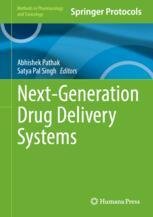Exploring the World of CRISPR-Cas9: A Beginner's Guide to Gene Editing
Hey there, science enthusiasts and curious minds! 🌟🧬 Gene editing might sound like something out of a sci-fi movie, but it’s actually a fascinating and rapidly advancing field of science. One of the most exciting tools in gene editing is CRISPR-Cas9. Let’s dive into this fun and simple guide to understand what CRISPR-Cas9 is and how it’s changing the world of genetics! 🌈🔬
What is CRISPR-Cas9?
CRISPR-Cas9 is a revolutionary gene-editing technology that allows scientists to make precise changes to DNA. Think of it as a pair of molecular scissors that can cut and paste genetic material with incredible accuracy. This technology has the potential to treat genetic diseases, improve crop yields, and even help us understand the human genome better. 🏺✨
How Does CRISPR-Cas9 Work?
- CRISPR: CRISPR stands for Clustered Regularly Interspaced Short Palindromic Repeats. These are sequences of DNA found in bacteria and other microorganisms. They act like a genetic memory, storing information about past viral infections.
- Cas9: Cas9 is a protein that acts as the "scissors" in the CRISPR system. It can cut DNA at specific locations based on a guide RNA.
- Guide RNA: The guide RNA is a small piece of RNA that matches the DNA sequence you want to edit. It guides the Cas9 protein to the correct location in the genome.
A Closer Look at the Process
To give you a better idea of how CRISPR-Cas9 works, check out this image from the Springer protocol:
Real-Life Applications
- Treating Genetic Diseases: CRISPR-Cas9 has the potential to treat genetic diseases like sickle cell anemia and cystic fibrosis by correcting the faulty genes. 🩺✨
- Improving Crops: Scientists are using CRISPR-Cas9 to create crops that are more resistant to diseases and environmental stresses, which can help feed a growing population. 🌾🌟
- Understanding the Genome: CRISPR-Cas9 is a powerful tool for researchers to study the human genome and understand how different genes function. 🧬🔍
Fun Facts About CRISPR-Cas9
- Nobel Prize-Winning Technology: In 2020, the Nobel Prize in Chemistry was awarded to Emmanuelle Charpentier and Jennifer Doudna for their work on CRISPR-Cas9. Their discovery has opened up new possibilities in genetic research and medicine. 🏆🌟
- Natural Origin: CRISPR-Cas9 is derived from a natural defense mechanism found in bacteria. Bacteria use CRISPR-Cas9 to defend themselves against viral infections by cutting the viral DNA. 🦠🛡️
- Versatility: CRISPR-Cas9 can be used in a wide range of organisms, from bacteria and plants to animals and humans. This versatility makes it a valuable tool in many fields of research. 🌍👩🔬
How to Get Started with CRISPR-Cas9
- Educate Yourself: Start by reading up on the basics of CRISPR-Cas9. There are many online resources and courses available to help you understand the technology.
- Join a Community: Join online forums and communities to connect with other enthusiasts and experts. You can learn from their experiences and get advice on your projects.
- Hands-On Experience: If you’re interested in practical applications, consider joining a lab or participating in a citizen science project. Hands-on experience is the best way to learn and apply your knowledge. 🧪👩🔬
What the Experts Are Saying
Here are a few comments from experts in the field:
- @GeneEditPro: "CRISPR-Cas9 is a game-changer in genetic research. Its precision and versatility make it an invaluable tool for treating genetic diseases and improving crops."
- @ScienceGuru: "The discovery of CRISPR-Cas9 by Charpentier and Doudna has opened up new frontiers in genetics. It’s an exciting time to be a scientist!"
- @Researcher: "CRISPR-Cas9 is not just a tool; it’s a revolution. It’s changing the way we approach genetic research and has the potential to solve some of the world’s biggest challenges."
Final Thoughts
So, there you have it! CRISPR-Cas9 is a fascinating and powerful tool that is changing the world of genetics. Whether you’re a scientist, a student, or just a curious mind, there’s always something new to learn and discover in this exciting field. 🌟🧬
Thanks for reading, and don’t forget to share your thoughts and questions about CRISPR-Cas9. Let’s keep the conversation going and explore the incredible possibilities of gene editing together! 🌱💬
Hope you enjoyed this post! Stay tuned for more science insights and discoveries, and don’t forget to stay curious and informed. 🌟✨
